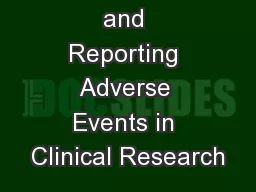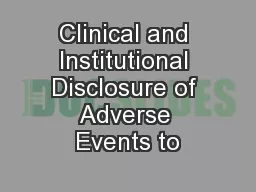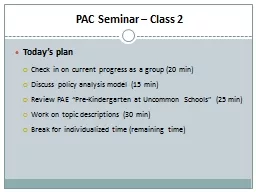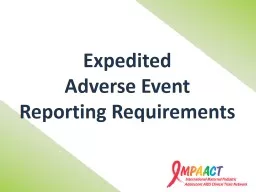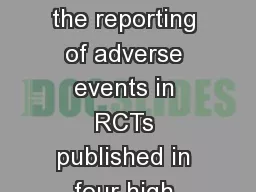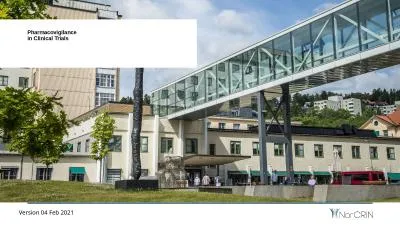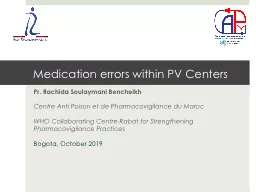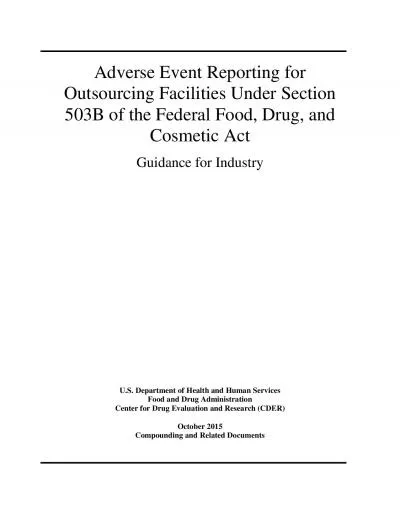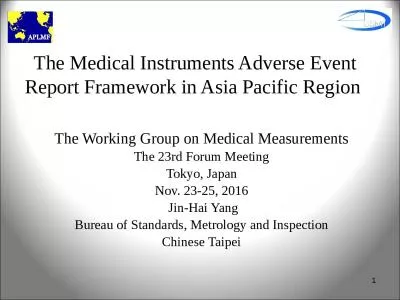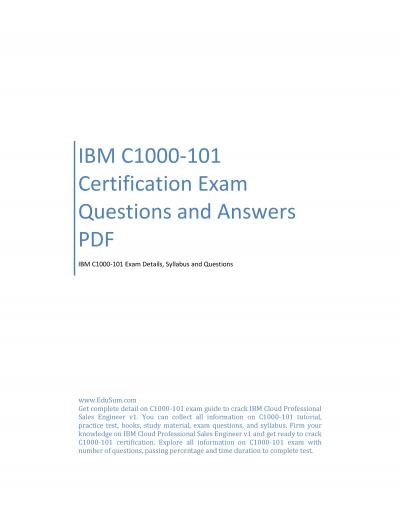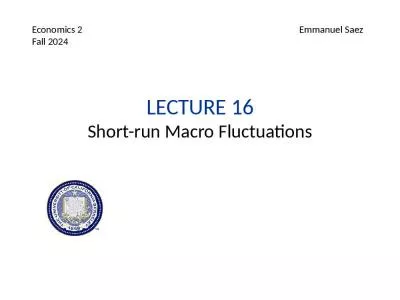Preventable Adverse Event (PAE) Reporting-101
Author : briana-ranney | Published Date : 2025-08-04
Description: Preventable Adverse Event PAE Reporting101 Vickie Gillespie PAE Clinical Specialist 011615 1 Preventable Adverse Event PAE Reporting101 Training Objectives Review the background of Preventable Adverse Event reporting nationwide
Presentation Embed Code
Download Presentation
Download
Presentation The PPT/PDF document
"Preventable Adverse Event (PAE) Reporting-101" is the property of its rightful owner.
Permission is granted to download and print the materials on this website for personal, non-commercial use only,
and to display it on your personal computer provided you do not modify the materials and that you retain all
copyright notices contained in the materials. By downloading content from our website, you accept the terms of
this agreement.
Transcript:Preventable Adverse Event (PAE) Reporting-101:
Preventable Adverse Event (PAE) Reporting-101 Vickie Gillespie, PAE Clinical Specialist 01/16/15 1 Preventable Adverse Event (PAE) Reporting—101 & Training Objectives: Review the background of Preventable Adverse Event reporting nationwide and in Texas. Introduce the legislative mandate for reporting of Preventable Adverse Events. Provide associated definitions related to PAE’s. List the reportable PAE’s and timeline. Explain the public reporting of facility PAE’s. Provide resources and references. Share planned follow-up training by DSHS. 2 Why Report? 1999 Institute of Medicine (IOM)* Estimated 98,000 deaths/year Most were systemic errors Called for a nationwide, mandatory reporting system 2013 John T. James, PhD** 2008-2011 four studies estimated a lower limit of 210,000 deaths/year Newest estimate is 440,000 deaths/year Serious harm 10-20 times higher than lethal harm (2-4 Million serious harm events/year) *To err is human: building a safer health system. Kohn LT, Corrigan JM, Donaldson MS (Institute of Medicine). Washington, DC:National Academy Press, 2000. **A New, Evidence-based Estimate of Patient Harms Associated with Hospital Care, James, John T. PhD, Journal of Patient Safety: September 2013 - Volume 9 - Issue 3 - p 122-128 3 Definitions Incident/Variance: A patient safety event that reached the patient, whether or not the patient was harmed. Medical Error: The failure of a planned action to be completed as intended, the use of a wrong plan to achieve an aim, or the failure of an unplanned action that should have been completed, that results in an adverse event. Adverse Event: An event that results in unintended harm to the patient by an act of commission or omission rather than by the underlying disease or condition of the patient. 4 Definitions continued Near Miss: Serious error or mishap that has the potential to cause an adverse event but fails to do so because of chance or because it is intercepted. Also called potential adverse event. SRE—Serious Reportable Event or “never-event” (NQF): Clearly preventable, serious patient consequences, and indicative of a real problem in safety and credibility of a health care facility. HAC—Hospital Acquired Condition (CMS): A reasonably preventable condition which was not present on admission (POA) but was present on discharge. Identified by CMS through claims. 5 World Health Organization* Healthcare prone to accidents— Greatest contributor is human error Most human errors induced by system failures One solution is reporting— By doctor, nurse or other provider within an organization By the organization to a broader audience Effective reporting— Cornerstone of safe

